This is the last in a series of ten posts about dance masks from Guatemala; this week I will show some terrific Diablo masks. Next week I will return to Mexico with an assortment of Juanegro masks from the Mexican state of Veracruz.
According to Brown and Rossilli (2008 Volume 1, Pages 551 and 552), Diablos appear in dances in several areas of Guatemala, and these dances exhibit considerable variety. Those authors showed many attractive and interesting Diablo masks. I have four Diablo masks from Guatemala in my collection, and I also have photos of some excellent additional masks from private collections, so I will present a representative sample.
Robin and Barbara Cleaver sold me this mask in 1995; it had previously been in the personal collection of Spencer Throckmorton. This is another of those “Moro” masks, much like the old red one in an earlier post, but this one has been converted to a Diablo by the addition of goat horns. This is one of my favorite Guatemalan masks. This style of Diablo mask is found in Totonicapán.
Like the red Moro and and the Pedro Portocarrero masks, this one has no mustache or beard. As previously noted, such masks can represent male or female figures, but this one does have a male hairline. It is finely carved.
The original wooden mask measures 8 inches tall, 6½ inches wide, and 4 inches deep. With the horns, it is 11 inches tall and 7¼ inches wide.
The back is heavily stained and there are areas of old breakage.
I purchased the next mask directly from Spencer Throckmorton in 1996. In contrast to the first, which was converted from a Moro to a Diablo, this mask was originally carved as a devil. We can say this with confidence because it has goat’s ears, which mark a human faced mask as the devil. This is a second mask in the style of San Miguel Totonicapán.
This Diablo has three horns. The next photo shows one of the goat’s ears.
The wooden part of this mask measures 8¼ inches tall, 6½ inches wide, and 4 inches deep. With the horns, this mask is 12 inches tall and 13 inches wide.
This mask has prominent staining from use. Note the morería mark- AP- that stands for Pedro Antonio Tistoj Mazariegos, of San Cristóbal Totonicapán, who lived from 1912 until 1978. Several weeks ago I included an old Alvarado mask that carried this mark.
The next mask is one that seems prone to mislead. At first glance one sees a pair of eyes and then a pair of round holes at a higher level, just as one expects for a Guatemalan mask. Then one notices that there are vision slits over the carved eyes, while the round holes are unlikely to be a third set of eyes. Furthermore, the round holes are tapered. This is a Diablo mask that has lost its horns. I don’t know where it is from.
This is an old mask with noble lines. I bought it from the Cavin Morris Gallery in 1994.
This mask is 7 inches tall, 6 inches wide, and 4 inches deep.
The back has an ancient appearance. The right edge was broken, long ago.
I bought this next mask from John Kania and Joe Ferrin, of Santa Fe New Mexico, in 1996. It is a real “sleeper,” in that it looks so simple at first glance, but increasingly complex on further examination. Across the forehead there are four holes, two are shaped to accept tapered attachments while those on the corners are shallow with flat floors. There are two more holes at the level of the chin; this is a Diablo mask that has lost an unknown collection of attached snakes and horns. I don’t know where this mask is from, either. However it has some resemblance to the masks that follow. Brown and Rossilli, who devoted a long chapter (2008 Volume 2, pages 551 to 586) to Diablo masks and dances, don’t seem to show a Diablo that has as many attachments as this one must have had. However, in Pieper’s later book, Guatemala’s Masks and Drama (2006, page 247), one finds Diablo masks from Chichicastenango that do have such a complex design, so perhaps this black Diablo is from that town.
Note the finely carved eyes and the noble nose of this mask.
The side view provides an excellent comparison of the two different styles of holes or sockets on the forehead. Then notice that there is a triangular recessed area along the back edge, below the corner of the mask; this would have been a place for the addition of an attached ear.
This mask is 7 inches tall, 5 inches wide, and 2½ inches deep. The leather tongue is nailed at the base. The rim of the mask is dark from use.
In his initial book—Guatemalan Masks: The Pieper Collection—Jim Pieper (1988, pages 52 to 53) discussed the Dance of the 24 Devils. He showed two dance photos. In his later book, Guatemala’s Masks and Drama (2006, pages 233 to 251), Pieper told much more about the dance, he provided names for the devils, and he even included a script that was translated into English by Tom Pirazzini. According to that document, the dance consists of repeated dialogues between the damned and their captors, the Diablos; these emphasize the terrible consequences of sin and the impossibility of escape from hell and its torments.
In the Brown and Rossilli chapter on the Baile Diablos (2008 Volume 2, pages 551 to 586), there is a presentation of masks from the Baile 24 Diablos from Ciudad Vieja along with some similar masks from San Miguel Dueñas (pages 552 and 560 to 562).
Now I have the pleasure of showing some wonderful masks representing this tradition, from private collections.
The first of these masks is said to represent El Diablo Mayor, or Luzbel. It was carved in about 1980 by Guadalupe Sinay, of the Morería Sinay, in San Antonio Aguas Calientes, Saquatepéquez, Guatemala. Luzbel, you may know, was said to be the most beautiful of the angels. It is said that he rebelled against God, was cast into hell, and there became the malignant figure who is commonly called Lucifer or Satan. In Mexico the Luzbel masks show the handsome face from before he was cast down. In this dance the use of the Luzbel name pointedly reminds us of his alleged state of sin and subsequent damnation; the theme of the dance is that such reversals and suffering are the wages of sin for all, the high and the low. It is obvious that this dance was scripted by the Roman Catholic missionaries.
A serpent crawls down the right side of the devil’s face.
There is a bat on the left cheek. The horns are faceted.
The nose has the form of a frog.
Staining from use on the back of this mask is moderate.
The second mask, also carved by Guadalupe Sinay, represents El Conductor, Lucifer’s principal assistant.
This mask has forked horns. The nose is exquisitely carved.
The horns are attached with mortised pegs.
There is significent wear on the back of this mask.
The third mask portrays the Seductor (seducer) from a related dance, Baile La Chapetona. It was carved by Oscar Cruz of Ciudad Vieja, Saquatepéquez, Guatemala about ten years ago.
Most striking is the snake that is depicted as crawling into the devil’s left temple and emerging on the right.
Equally interesting are the multi-lobed nose and chin.
The back shows mild staining from use.
The next two Diablos have green faces. The first represents the Diablo Mayor Verde, a mask that appears to be mirror the black Diablo Mayor that we just examined. This is another mask by Oscar Cruz. They are said to be green in order to convey their advanced age; they are “very old” Diablos.
We see again a serpent on the right cheek, a bat on the left, and the tip of the nose has the form of a frog. This mask is remarkably well carved.
There is a handsome bat on the left cheek. These horns appear to be grooved.
This is a danced mask.
The second green Diablo is smaller than the other, and was meant to perform in the dance of the 24 devils. It too was carved by Oscar Cruz.
Oscar Cruz is clearly a gifted carver.
This mask was rented out over a period of several years, and demonstrates mild staining from use.
The next mask is NOT from the dance of the 24 devils. It comes from Esquintla, Guatemala.
This mask has a less elaborate design, compared to those in the 24 devils dance. Nevertheless it is quite interesting, with the serpent depicted by paint alone until the place where it emerges from the surface of the mask.
The four horns have a star-like appearance.
Even though the back of this mask has been cleaned and sanded, one can still see that this is an old and heavily used mask.
The last mask is from Chichicastenango. It was carried by a Diablo as a dance prop.
This is a nice little carving.
I hope that you have enjoyed this ten week series about masks from Guatemala. Next week I will begin a new series of posts about the Juanegro Masks of Hidalgo and Veracruz.


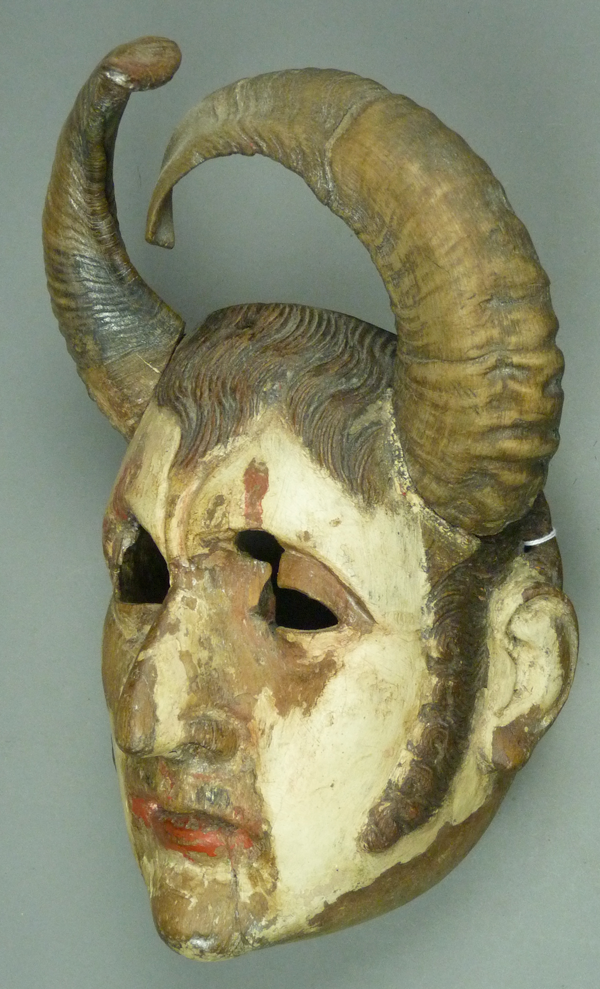
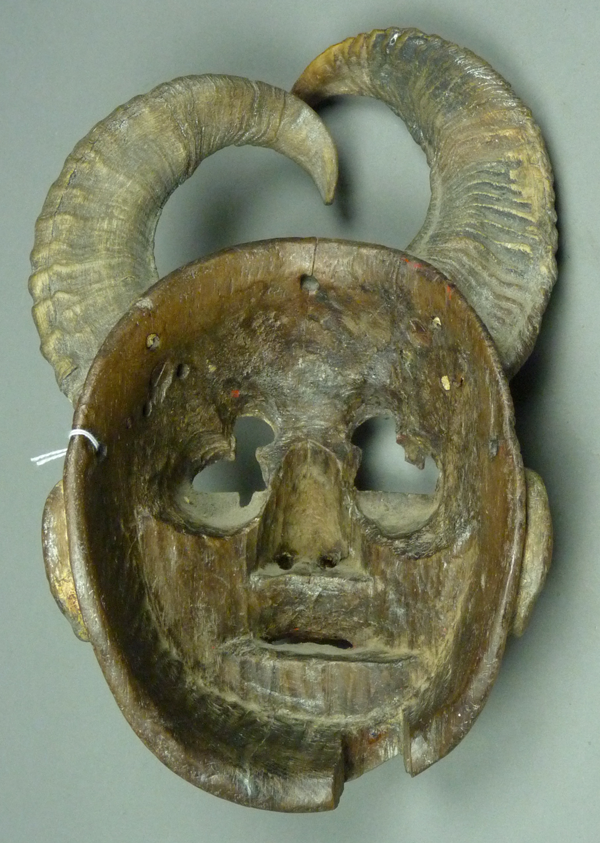
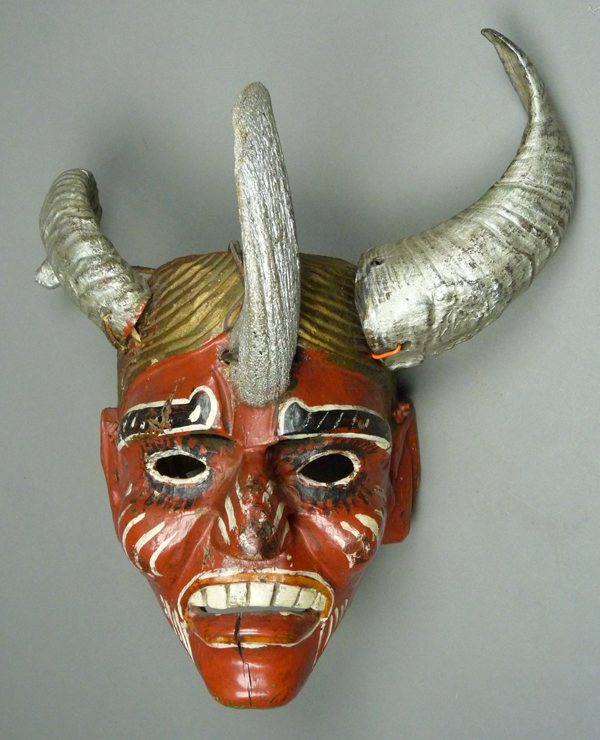
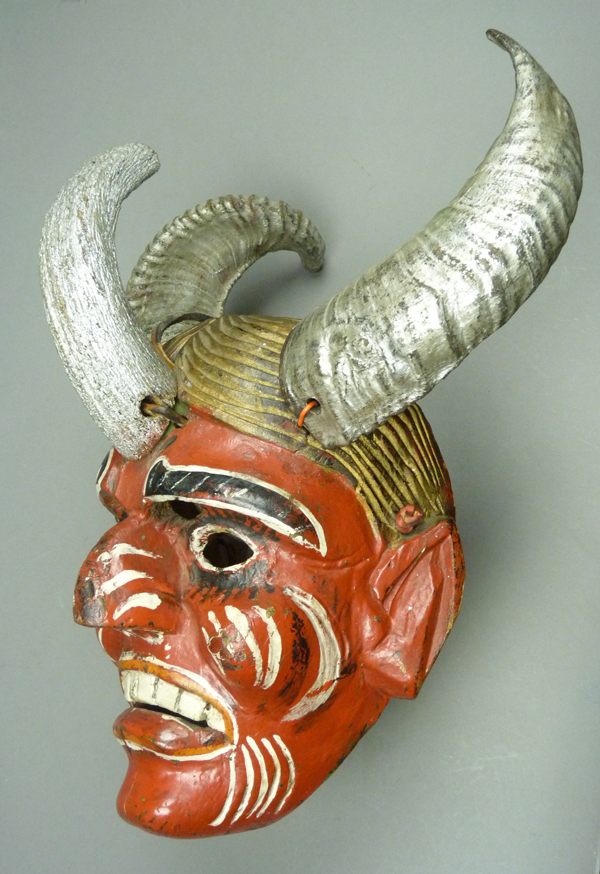

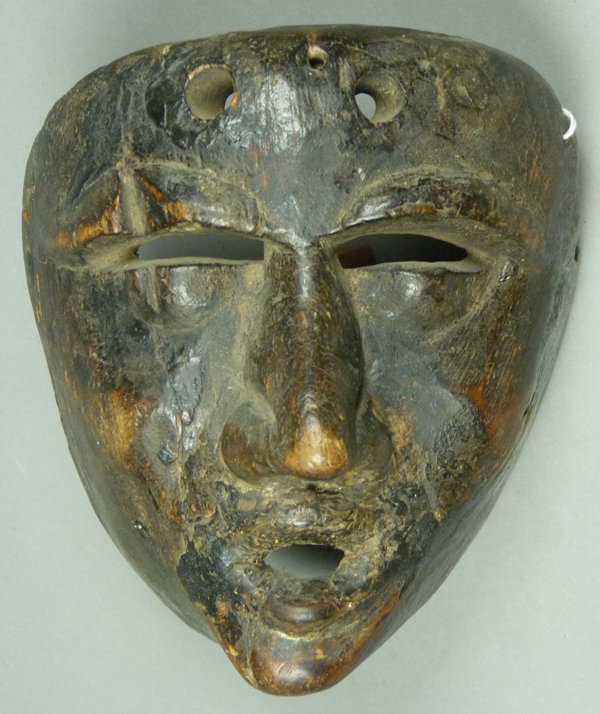
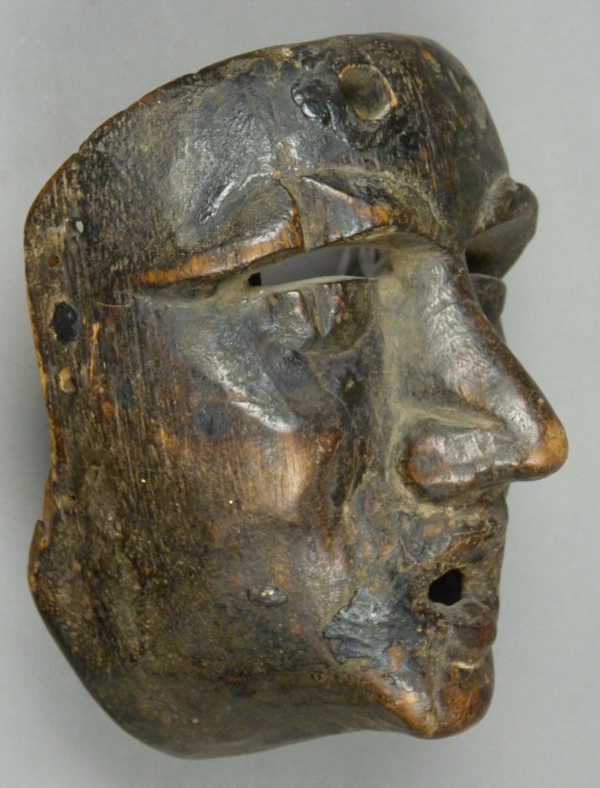
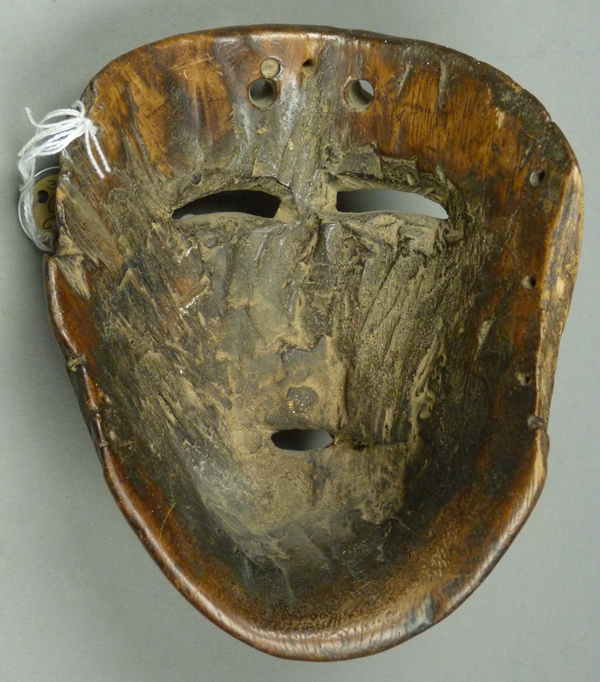
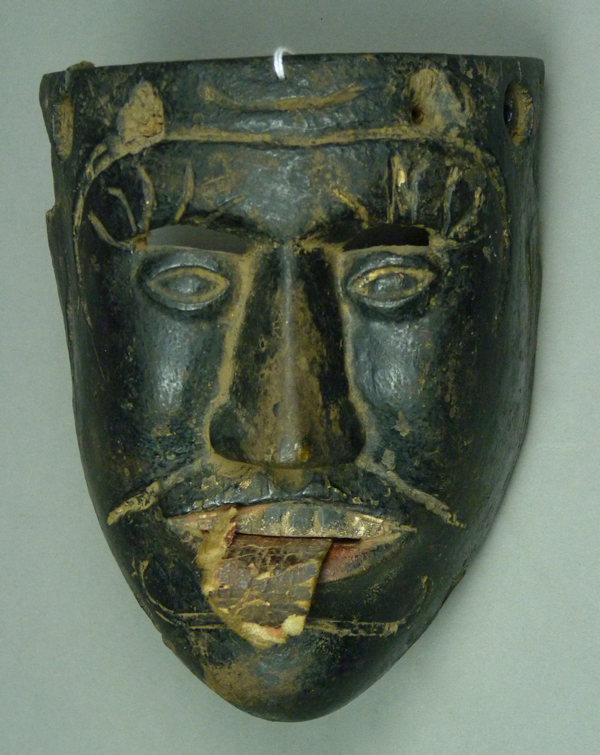
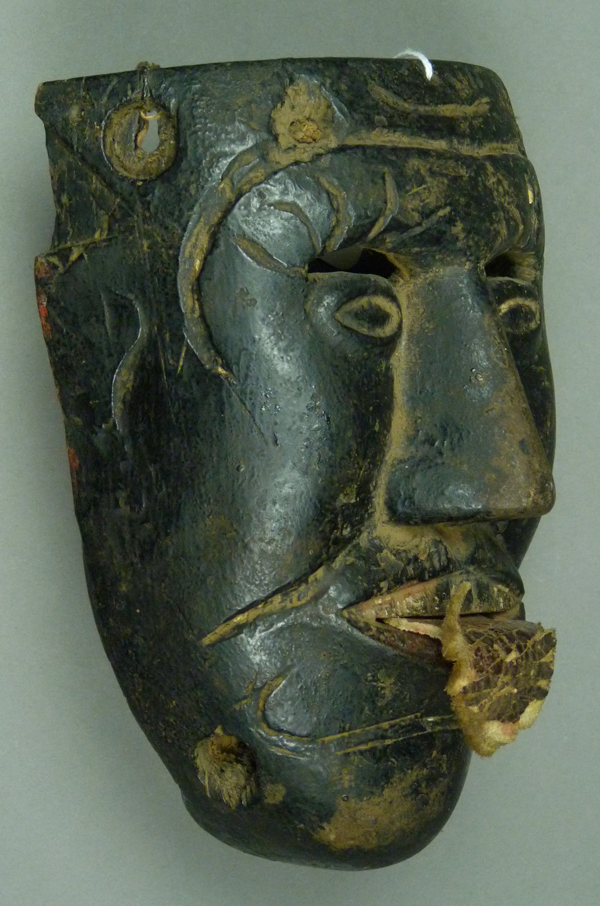
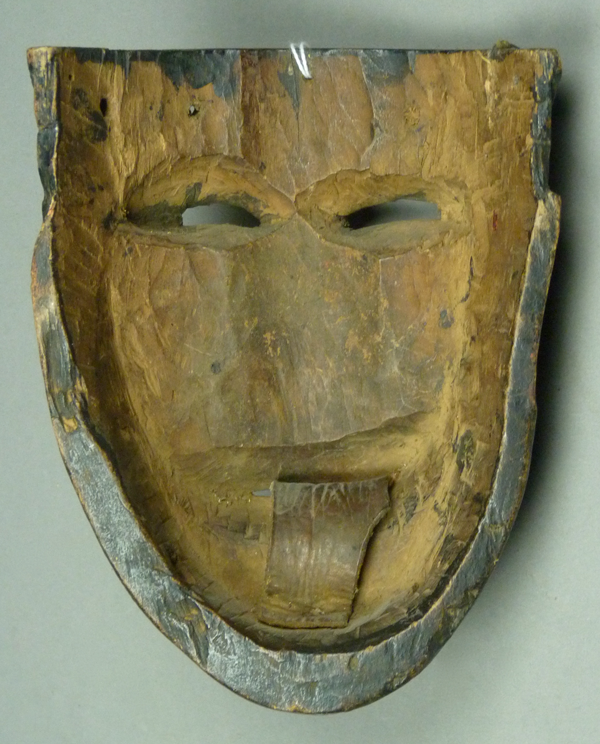






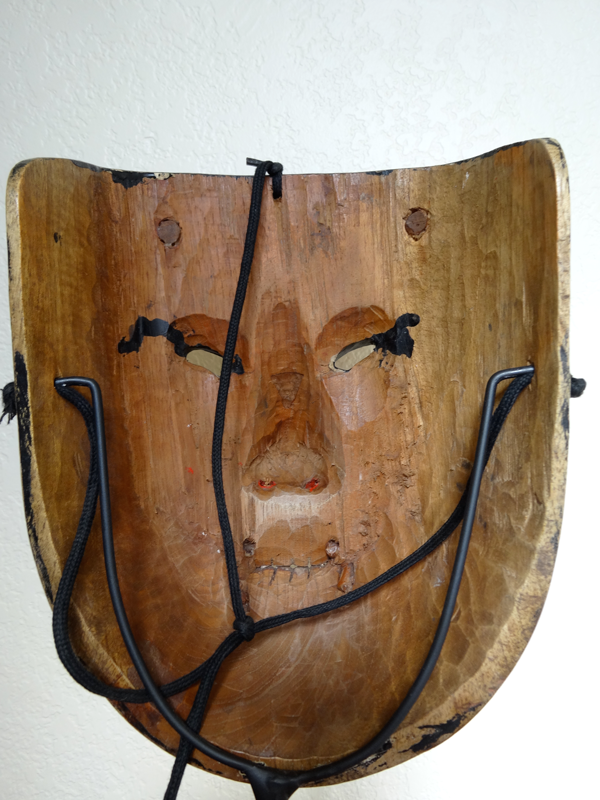


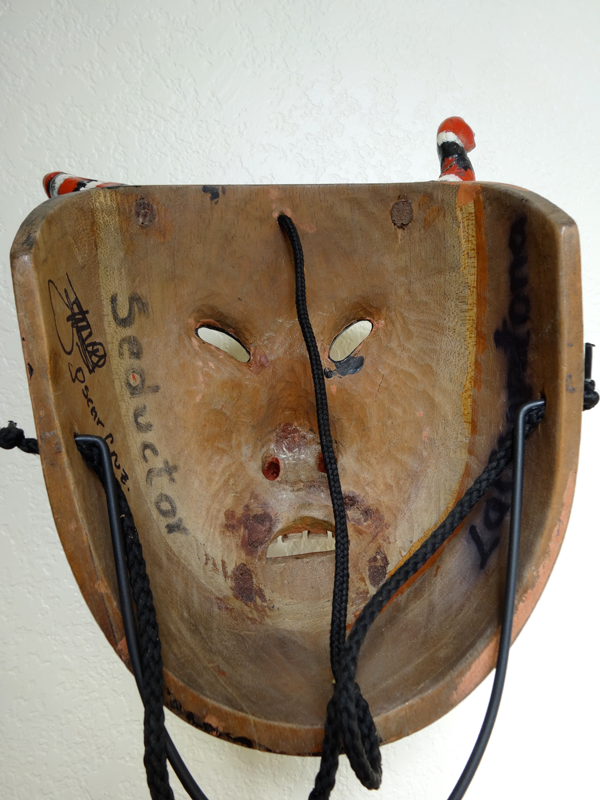




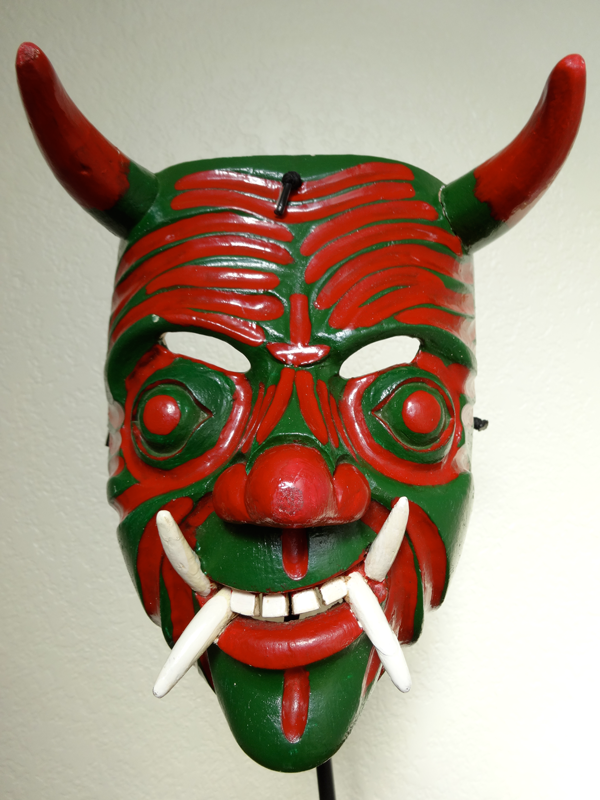


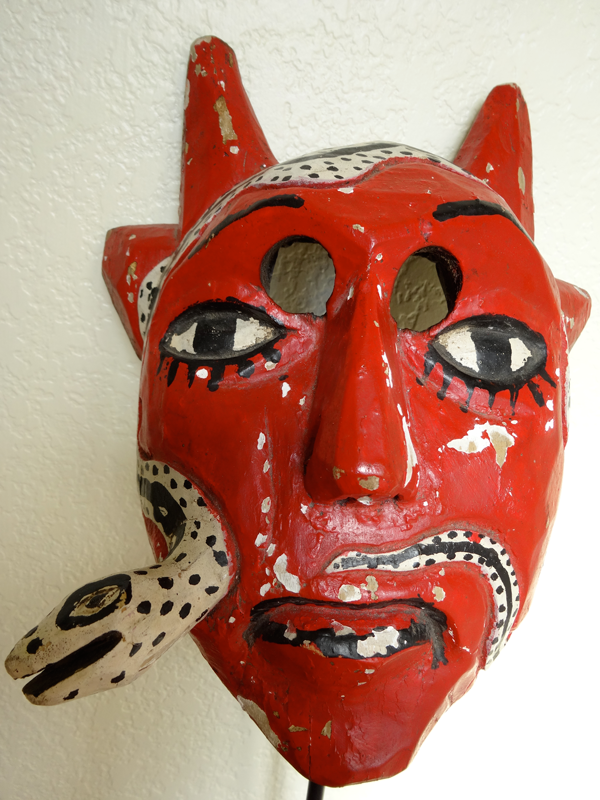

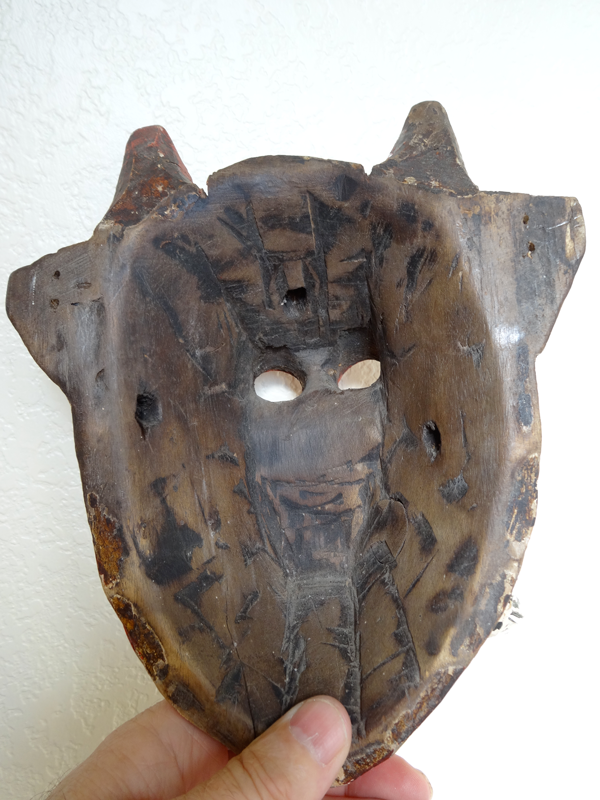


i love your masks, i have been trying to find out the mask i dug up 20 years ago and you have one some what like it,, Diablo ,, mine has red faced ram horns with frog between horns,, any info would be appreciated,, thank you
EXCELLENT PRESENTATION
INTERESTED IN READING MORE